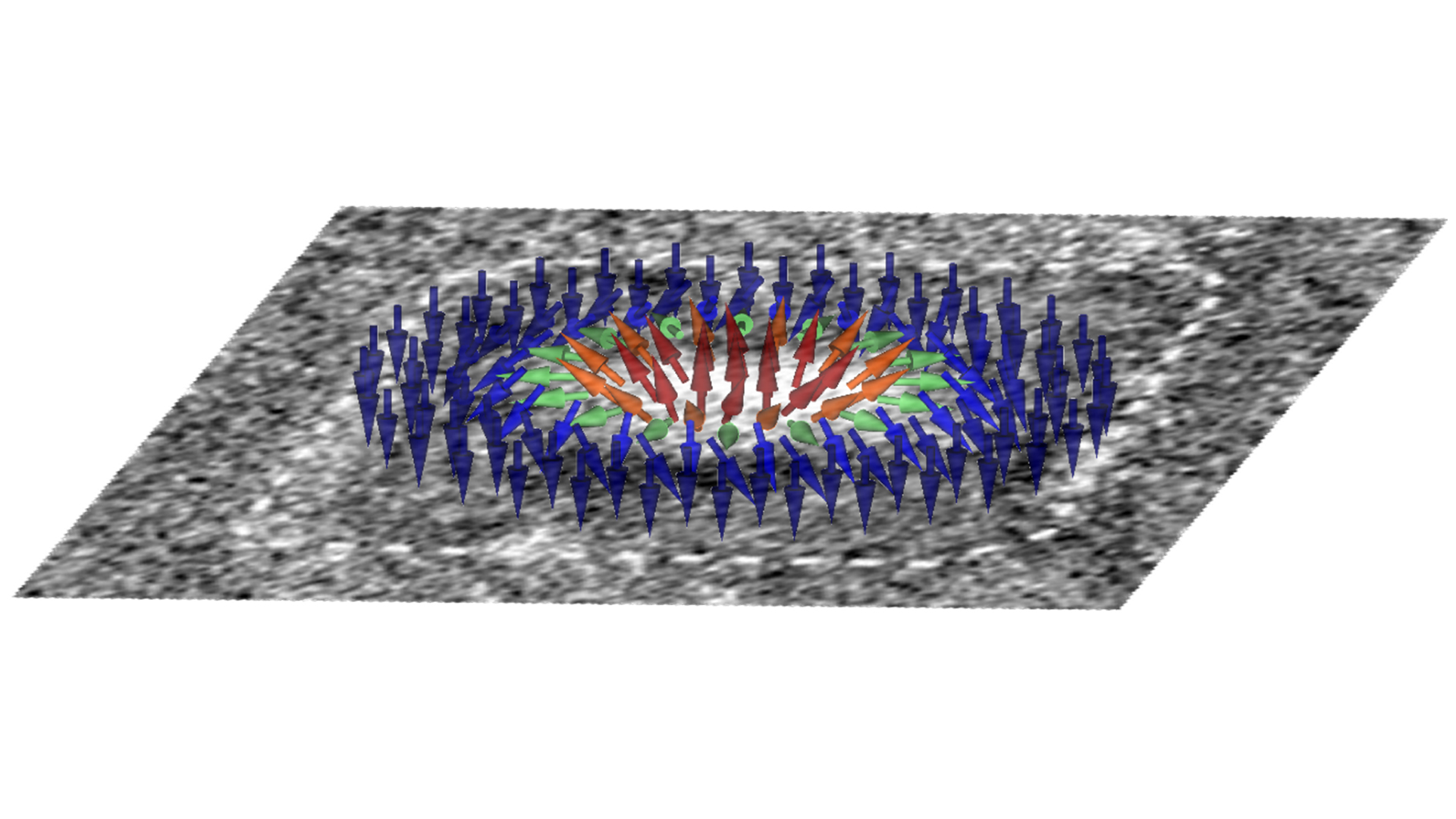
A bizarre type of magnetic quasiparticle that looks like a tiny, swirling bubble could one day be used as a computing bit in future memory devices after scientists sped it up enough to transmit data.
"Skyrmions" — informally called "nanobubbles" by the scientists — are formed of a few dozen atoms and are just a few nanometers in width. By contrast, a strand of human hair is up to 100,000 nanometers thick. A skyrmion generates itself from magnetic field lines as it moves through a medium. The quasiparticle comprises elementary nanomagnets, called spins, that wind together over the magnetic lines to form a whirling, spiral structure that resembles a tight knot.
Scientists have long theorized that skyrmions could potentially be used to store data — where the presence of a skyrmion will encode a 1 and its absence will encode 0. For instance, IBM researchers used skyrmions in a prototype device called "racetrack memory." Previous research has also identified them as a candidate for qubits, or quantum bits, in quantum computers.
In a new study, published April 19 in the journal Science, scientists argue that skyrmions can be used to store information in a new type of "universal memory." Such a component would combine the best of separate ones in computers today — namely, short-term memory, like random access memory (RAM), and flash memory, such as solid-state drives (SSDs) or hard drives.
RAM is fast but occupies a lot of space and needs a constant power supply, meaning data is wiped when a computer is turned off. Flash memory, meanwhile, is dense and can retain data without power, but its data transfer speeds are much slower than RAM. They all use electrons as bits.
Related: The 7 most powerful supercomputers in the world right now

In the new study, the researchers say skyrmions could be used in place of electrons as a new type of bit that could eliminate these limitations.
"The advantage of magnetic skyrmions is that they combine non-volatility, namely, the information is stored permanently with no power consumption, fast manipulation and high density," lead study author Olivier Boulle, a research scientist at the National Centre for Scientific Research (CNRS), told Live Science.
Previously, skyrmions had only moved as fast as 100 meters per second (roughly 225 mph), which is too slow to compete with state-of-the-art technologies, the scientists said. But in the study, they sped up skyrmions to speeds of 900 m/s (approximately 2,000 mph). This is an "important step for skyrmion-based devices," Boulle said.

They sped up the nanobubbles by moving them through an antiferromagnetic material with a current — and they calculated the speed by measuring how long the quasiparticles took to travel through the material using "very high spatial resolution magnetic microscopy."
Permanent magnets result from ferromagnetism, while antiferromagnetism is a type of magnetism in which adjacent ions behave as tiny magnets that align themselves in antiparallel arrangements throughout the material. The antiferromagnetic stacks they used consisted of two ferromagnetic layers, such as cobalt, separated by a thick, non-magnetic layer with opposite magnetization.
Simulations as part of this study showed skyrmions can not only store data but perform calculations too, Boulle added. For example, he said his team recently demonstrated that it's possible to perform logical operations with them — and the researchers are currently trying to use them in a basic artificial intelligence (AI) chip.
If exploited in future research, skyrmions could become the basis of a component that combines the functionality of a central processing unit (CPU) and the storage capabilities of universal memory, Boulle said. Such a component could lead to much faster machines than we have today because data wouldn't need to travel between a CPU and the different memory components avoiding a bottleneck in processing speeds.







